

Designation:Pegasus Assault Shuttle (AS) |
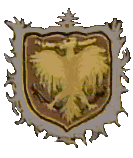
|
||||
  |
|||||
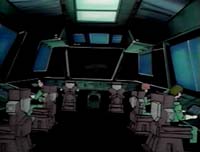
| Length: | 77.7 meters. |
| Height: | 23.3 meters. |
| 13.0 meters (without tails/antennas) | |
| Span : | 32.2 meters. |
| Weight: | 912 metric tons unloaded. |
| 1140 metric tons at full load. |

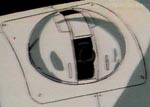
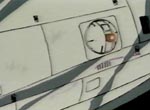
The Pegasi are primarily lightly armed space shuttles. They are designed to transport a small group of mecha (1/3 squadron) to space and then to launch these at the enemy. If necessary, the mecha or any other cargo, can also be transported to a moon. Their layout reflects these simple design goals. Like with the old pre-war shuttles, the Pegasus is launched vertically from a platform. The design mounts a cockpit in a blister up front, a small cargo bay behind that, closed by full-length hinged doors, and four main engines mounted at the stern. Two delta wings are mounted at the rear, and two large fins, almost as large as the wings, spring from the wing-roots in an angle of 45 degrees. Three medium laser turrets are distributed around the forward fuselage. The Pegasus often uses a liquid fuel booster package attached to the bottom to save on internal reaction mass, thus increasing its delta-v by 6 kps.
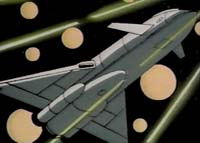
Earth commissioned several new types of smaller combat vessels after the First Robotech War. Two of these were dedicated orbital combat shuttles for the Southern Cross and the REF. While for a small duration it looked as if a common design could be produced, the vastly different requirements eventually created two separate classes, each capable of carrying a small attack force (8 mecha or an Infantry platoon) to their battlefields. The Southern Cross commissioned the Pegasus Assault Shuttle, a mecha transport that mostly relied on its small size and large numbers; The REF built the larger, abler and heavier Predator Assault Dropship, which had far better performance, but was almost half again as heavy and twice as expensive.
The Southern Cross needed little more than an armed space shuttle that had to carry its cargo into Earth or Lunar orbit. As all launches would be from permanent bases, no expensive terrestrial-gravity VTOL capability was necessary (though a lighter VTOL system was needed for lunar landings because of the lack of an atmosphere), and a liquid fuel booster package could be used as well. The result was the simple, reliable and light Pegasus shuttle. Almost 800 of these craft were built by the Southern Cross during the interwar years, and many were lost fighting the heavily armored and armed vessels of the Robotech Masters. The Pegasus was intended to be used against Zentraedi Fighter pods as they descended into the atmosphere; while the larger Southern Cross ships were to engage the Zentraedi Battlecruisers, the shuttles were to ascend to orbit and deliver their mecha payloads, which they would then support against the Fighter and Re-entry pods. For this, the Pegasus was adequate, but as so often happens, the design did not see combat against its intended foes.
Instead, the shuttles were used to carry mecha up to the orbiting Motherships of the Robotech Masters, an enemy far deadlier to the shuttles than the Zentraedi were thought to be. Few Pegasus ships survived their Phyrric victories, and fewer still the Southern Cross' many defeats.
See Southern Cross Naval Gallery.
Return to Southern Cross naval auxiliary index.
Go to Robotech Reference Guide Home Page
Robotech (R) is the property of Harmony Gold. This document is in no way intended to infringe upon their rights.
Content by Pieter Thomassen, with Peter Walker and Rob Morgenstern